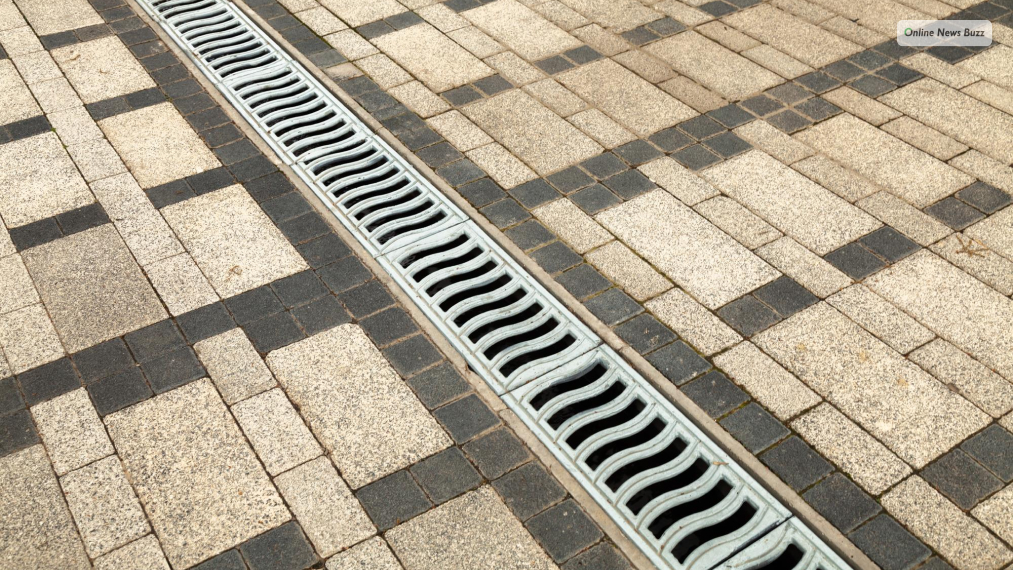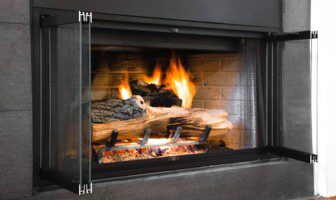
Proper drainage not only protects your property but also improves its value. Additionally, poorly drained facilities are difficult to manage, and you will have problems with the landscaping.
So, the last thing you want on your property is standing water, a health hazard, and an eyesore.
Furthermore, channel drains, known as trench drains, have emerged as the most reliable drainage systems for all properties and areas.
From roads, pedestrian pathways, residential compounds, docks and airports, and mall driveways to car parks, channel drains prevent flooding caused by surface and rainwater.
There are different channel drains on the market and choosing the best one can be difficult. So, this post explores different channel drains, their features, advantages, and factors to consider when shopping for a trench drain.
How a Channel Drain System Works

According to Jonite, one of the world’s leading trench grates manufacturing companies, paying attention to drainage is something most homeowners neglect.
They say that it is essential that homeowners pay proper attention to keeping their drainage in the best possible order and condition.
A channel drain consists of a channel and a removable grate. It works through gravity to drain water away from one selected area. Additionally, these channels are positioned where surface water or rainwater will most likely flow.
Furthermore, the drains funnel away excess water run-off from heavy rainfall or other spillages but remain aesthetically attractive.
By collecting and draining water away, this type of drain keeps areas around it dry and protects against structural problems. Additionally, it is great for preventing flooding, damage caused by spillage, and damage to landscaping.
Furthermore, trench drain grates are crucial in facilitating water flow into the drain and supporting the weight of people or vehicle traffic above it. For a trench drain to work, the removable drain grate should be robust, sturdy, and challenging to withstand the impact of traffic passing over it.
Types Of Channel Drain: Materials
As people settle in new areas, the demand for proper drainage has grown. Additionally, some of these areas are sloping, while others are flat. Furthermore, the types of contrition also vary, leading to the manufacture of unique drainage systems on the market.
So, here are some of the channel drain systems you can choose from include:
- Polypropylene (plastic)
- Concrete
- Polymer concrete
- Metal (for wet rooms, showers)
These drains are ideal for different applications, including car parks, driveways and pathways, swimming pools, sports areas, patios and conservatories, gardens with water features, petrol station forecourts, and paved public spaces.
Types Of Channel Drain: Load Classification
You can choose channel drains based on the load they can support. For instance, some are light-duty and can work in pedestrian areas.
Other drains can support domestic driveway traffic, while others can support the heaviest traffic at ports, docks, and airports.
Types Of Channel Drain: Grating Material
Channel drain systems also have a specific grating, and you can choose from:
- Polypropylene (plastic)
- Ductile iron
- Aluminum
- Stainless steel
- Concrete/stone
- Stainless ductile
- Galvanized steel
- Cast iron
You can choose different trench grating designs to suit your unique drainage and aesthetic needs. Such designs include perforated grating, slotted drains, heel guards, and permeable, solid, and decorative grating.
How To Choose The Right Trench Drain

Picking one trench drain from all these options is an overwhelming task. Some of the factors to help overcome the channel drain confusion include:
Purpose of the Drain
Firstly, continually assess the needs of the drain to help you make the right choice. Additionally, you should consider the type of landscape, expected water volumes, traffic weight, and other such factors.
Furthermore, you should also consider the slope of the surface where the channel drain will go. This helps you make a solid decision.
Compare Type of Drain Materials
Secondly, consider aspects of trench drain materials.
- Firstly, cast iron is the best for compressive strength.
- Secondly, you can use steel, ductile iron, and FRP (Fiber Reinforced Plastic) for tensile strength, which ranks higher.
- Thirdly, steel, FRP, and GFRPC (glass fiber reinforced polymer concrete) for flexural strength.
- Fourthly, for impact resistance, you can use steel, which typically has high impact resistance
- Fifth, you must use non-porous materials such as steel, cast iron, FRP, and polymer concrete for perfect water absorption or freeze-thaw.
- Sixth, for thermal expansion, you must avoid thermal plastics in areas where you want to drain high-temperature liquids. Heat doesn’t affect FRP, doesn’t concrete, GFRPC, and epoxies.
- Seventh, non-flammable materials like cast and ductile iron, concrete, and steel for fire resistance.
- Next, you must use cast and ductile iron and steel for abrasion resistance.
- Furthermore, for chemical resistance, use FRP (Fiber Reinforced Plastic), polyethylene, and GFRPC (Glass fiber reinforced polymer concrete), which have the highest chemical resistance.
- Lastly, for UV resistance, look for certification to ensure the material is UV stable.
Durability
Thirdly, the best trench drain should have an extended lifespan. Additionally, look for a durable material that won’t deteriorate due to water exposure or other liquids. Furthermore, this should apply if you want to find the best trench grates out there.
Choice of Drain Grates
Fourthly, choose the best trench grates to protect the drain, support traffic over the drain, and ensure the drainage system works. Additionally, look for grates with UV inhibitors for increased lifespan and frames or rails for enhanced support to the grates.
Furthermore, aesthetics is an important consideration when choosing grates. So, go for trench grates that enhance the aesthetics of your property in design and color.
Ease of Installation
Fifth, you should choose a trench that’s easy to install. This saves you time and money.
Visual Appeal
Lastly, you should consider a channel that’s functional and aesthetically appealing. This improves the curb appeal of your property.
Final Thoughts
Good drainage is one of the most important considerations in any construction. Choose the best drain system if you want to build a home, commercial, or industrial facility. You invest a lot of money in construction to build a long-lasting structure.
Therefore, it’s essential for you to look after aspects like drainage and electrical circuits which can damage any structure. Using these tips, you can channel drains to suit the property’s drainage needs.
Read Also:




























